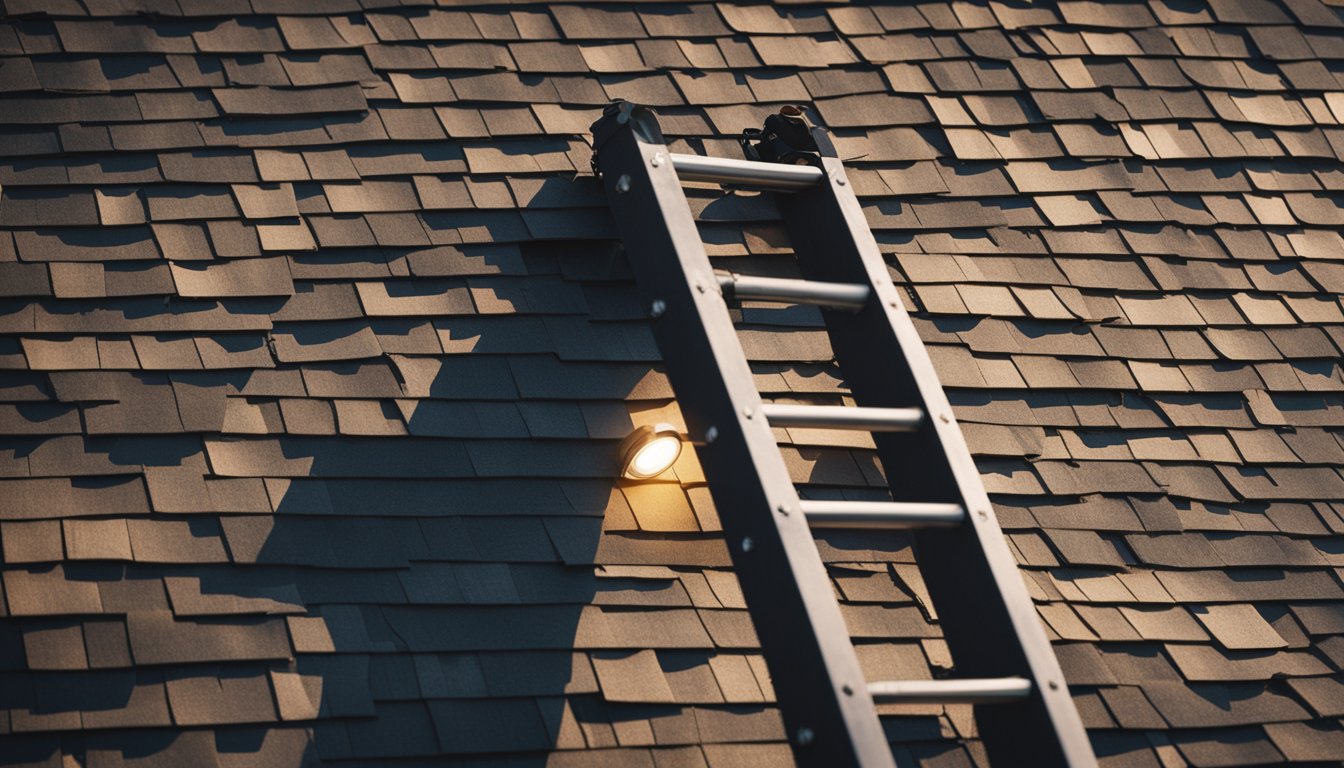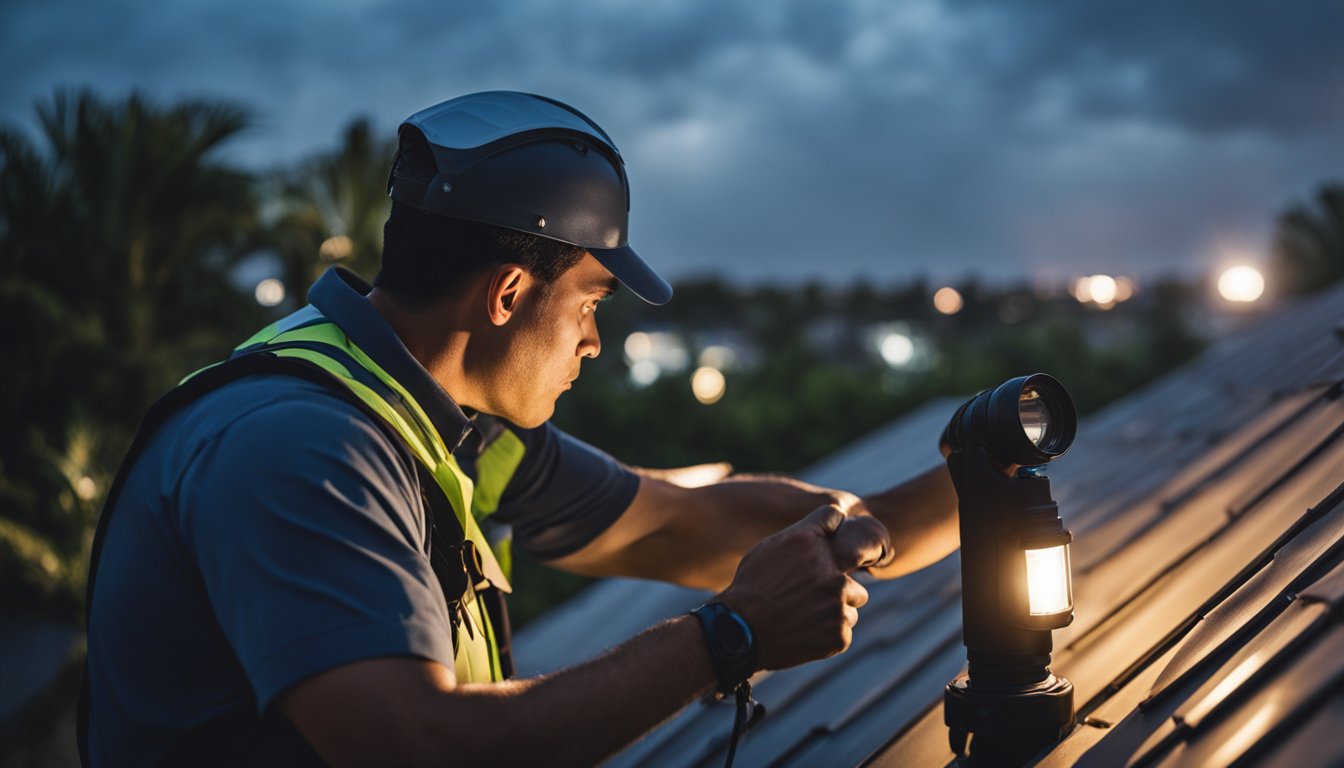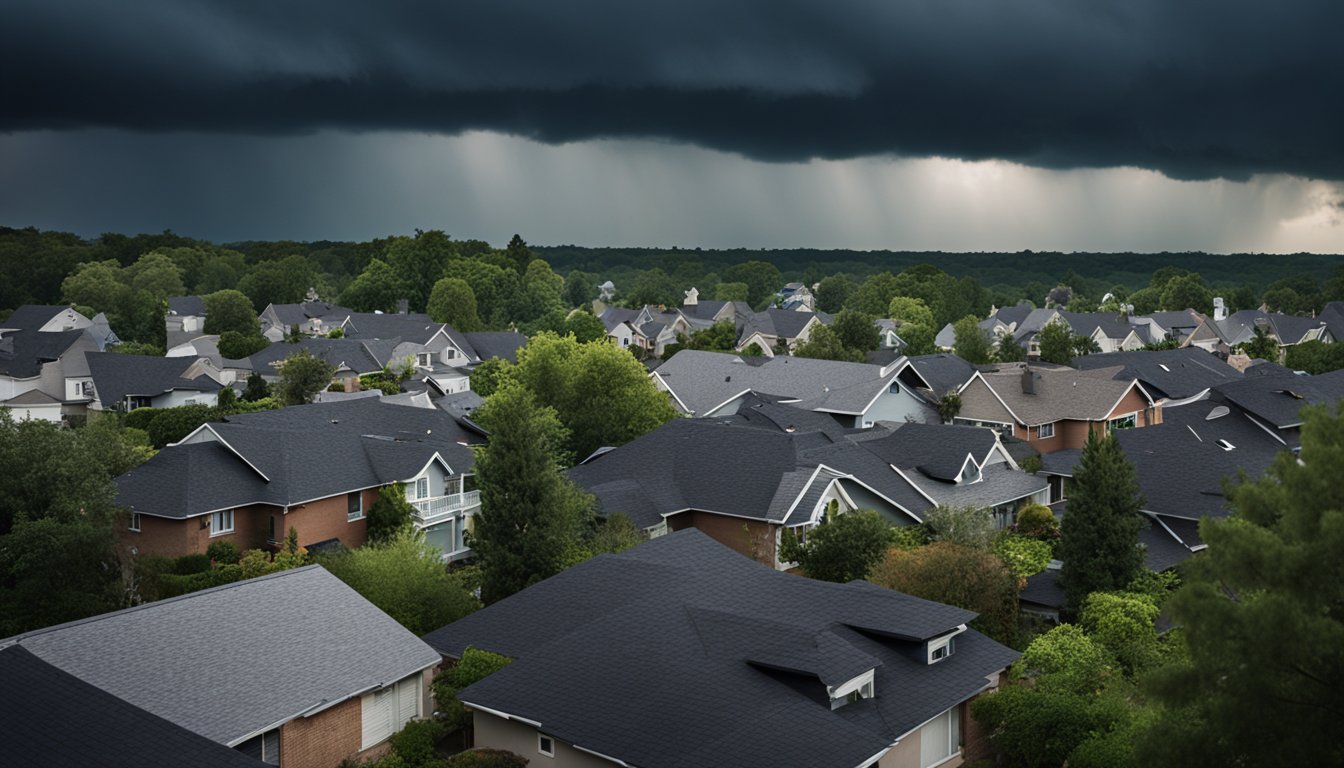Late updated: 08 Aug 2024 10:08
Written by: Oliver Bennett
How To Properly Inspect Your Roof After A Storm: Essential Steps and Guidelines
Inspecting your roof after a storm is a crucial step to ensure the safety and integrity of your home. Significant storms can cause substantial damage that, if left unchecked, could lead to costly repairs. By thoroughly inspecting your roof post-storm, you can identify and mitigate damage before it escalates.

We will walk you through the key steps to properly inspect your roof after experiencing severe weather. This will help you spot any issues that need immediate attention, such as damaged shingles or broken gutters. It's essential to maintain a cautious and systematic approach to safeguard your home effectively.
Taking swift action after a storm ensures you address minor problems before they turn into major headaches. We'll discuss external and internal inspection methods, covering everything from spotting water leaks in your attic to evaluating the condition of your roof’s flashing and gutters.
Key Takeaways
- Proper roof inspection after a storm helps identify damage early.
- Safety and systematic checks are vital for effective evaluation.
- Addressing minor issues promptly prevents major repairs.
Assessing Exterior Roof Damage
To properly inspect the exterior of your roof after a storm, we focus on identifying various signs of damage, including loose or missing shingles, gutter issues, and damaged flashing. These key points will help ensure the safety and integrity of your roof.
Identifying Common Signs of Storm Damage
Storm damage to a roof can manifest in many forms. Cracked or curled shingles are common indicators, often caused by high winds or hail. Dents on shingles typically point to hail damage, while holes in the roof may stem from fallen branches. It's imperative to check for loose nails and evaluate any potential damage early to prevent further deterioration.
Checking for Loose or Missing Shingles
High winds often lead to missing or dislodged shingles. During our inspection, we ensure to look for gaps or misplaced shingles. Shingles that are loose may shift, causing water leaks and reducing the roof's overall effectiveness. If we notice any cracked or curled shingles, we'll need to immediately address these issues to avoid more severe damage.
Inspecting the Gutters and Drainage
Gutters play a crucial role in your roof’s drainage system. After a storm, check for debris such as leaves and branches that could clog the gutters. Clear any blockages to prevent water from backing up and causing water damage to your roof and home. Additionally, look out for broken or sagging gutters, which may need repair or replacement.
Looking for Damaged Flashing and Debris
Flashing around vents, chimneys, and skylights often gets damaged during storms. Damaged flashing can allow water to penetrate, leading to leaks. Ensure that all flashing is intact and securely fastened. Pay attention to any storm debris on the roof surface, as heavy items like branches can cause indentations or holes, compromising the roof structure.
By focusing on these important areas, we can ensure a thorough and effective assessment of our roof’s exterior condition following a storm.
Evaluating Interior Roof Condition

Inspecting the interior of your roof involves checking for water damage, structural integrity, and the state of insulation and ventilation. These elements are crucial to prevent long-term damage and ensure safety and efficiency.
Spotting Water Damage from the Attic
Start by entering the attic and using a flashlight to spot water stains or discoloration.
Look for wet spots or areas with apparent moisture, particularly on the rafters and decking. Pay close attention to the presence of mould or mildew, which can indicate chronic water infiltration.
Sunlight streaming through holes or cracks signals gaps in the roof structure where water can enter.
Additionally, inspect the insulation for dampness, as wet insulation is less effective and can promote mould growth.
Checking for Structural Integrity
Assess the structural integrity by examining the wooden beams and rafters.
Check for any signs of sagging or warping, which might demonstrate significant water damage or weakening over time.
Loose or cracked decking near the roof’s eaves can be a sign of ice dams causing water to back up under the shingles and seep into the attic.
If you observe any structural weaknesses, it may be necessary to consult a professional for a more detailed evaluation.
Assessing Insulation and Ventilation
Proper insulation and ventilation are key to a healthy and efficient roof.
Examine the insulation for uniform coverage and signs of water damage, which reduces its effectiveness. Ensure there are no gaps, as these can lead to heat loss in the winter and excess heat accumulation in the summer.
Check the attic’s ventilation by ensuring the soffit and ridge vents are not blocked. Good ventilation helps in preventing moisture build-up and reduces the risk of ice dams.
Maintaining these aspects can extend the roof’s lifespan and improve your home’s energy efficiency.
Frequently Asked Questions

When inspecting your roof after a storm, there are specific steps and indicators to consider for assessing damage from hail, wind, or debris. Understanding these pointers can help you decide when professional intervention is needed.
What are the key steps in inspecting storm damage to a roof?
We recommend starting from the inside by examining your attic for leaks or moisture. Then, check the roof exterior for missing or damaged shingles, and inspect the flashing around chimneys and vents. Finally, look for any debris that might have caused harm.
What should be included in a roof storm damage checklist?
A thorough checklist should cover inspecting the attic for leaks, examining the shingles, checking the flashing, and ensuring the gutters are clear. Additionally, look out for bent or detached flashing, missing shingles, and roof debris like branches and leaves.
How can you detect hail damage on your roof?
To detect hail damage, look for dents or bruises on shingles, which may have granules knocked away. You may also notice damage to roof vents, skylights, and gutters, as well as any cracked or broken shingles.
What indicators suggest the need for a professional roof inspection after a hail storm?
We advise seeking a professional inspection if you observe significant dents, multiple cracked shingles, damaged flashing, or leaks inside your attic. These are signs of severe damage that may require expert repair.
What are the signs of wind damage to a roof that may warrant an insurance claim?
Wind damage often manifests as missing or loose shingles, damaged gutters, and detached flashing. In severe cases, portions of the roof may be completely blown away. Visible water leaks inside your home can also be a result of wind damage.
How do you assess your roof for potential storm damage?
To assess potential storm damage, conduct a visual inspection from both the inside and outside of your home. Check for leaks and water stains in the attic, and inspect for missing or damaged shingles, bent flashing, and debris on the roof exterior. If in doubt, consult a roofing professional for a comprehensive inspection.
